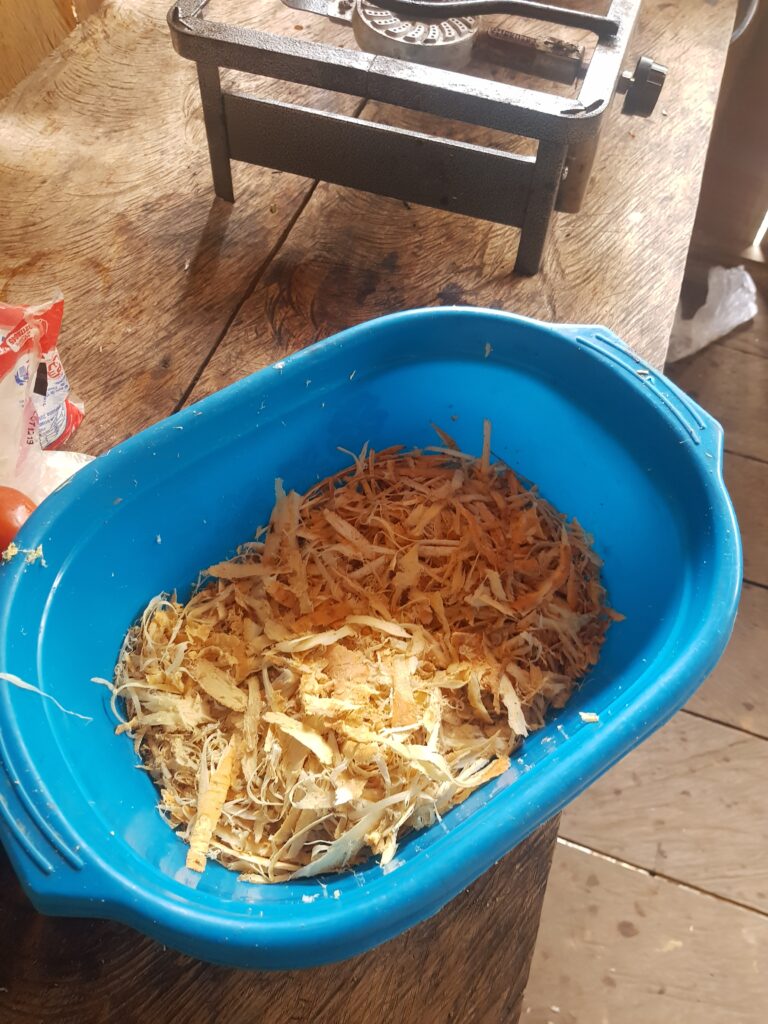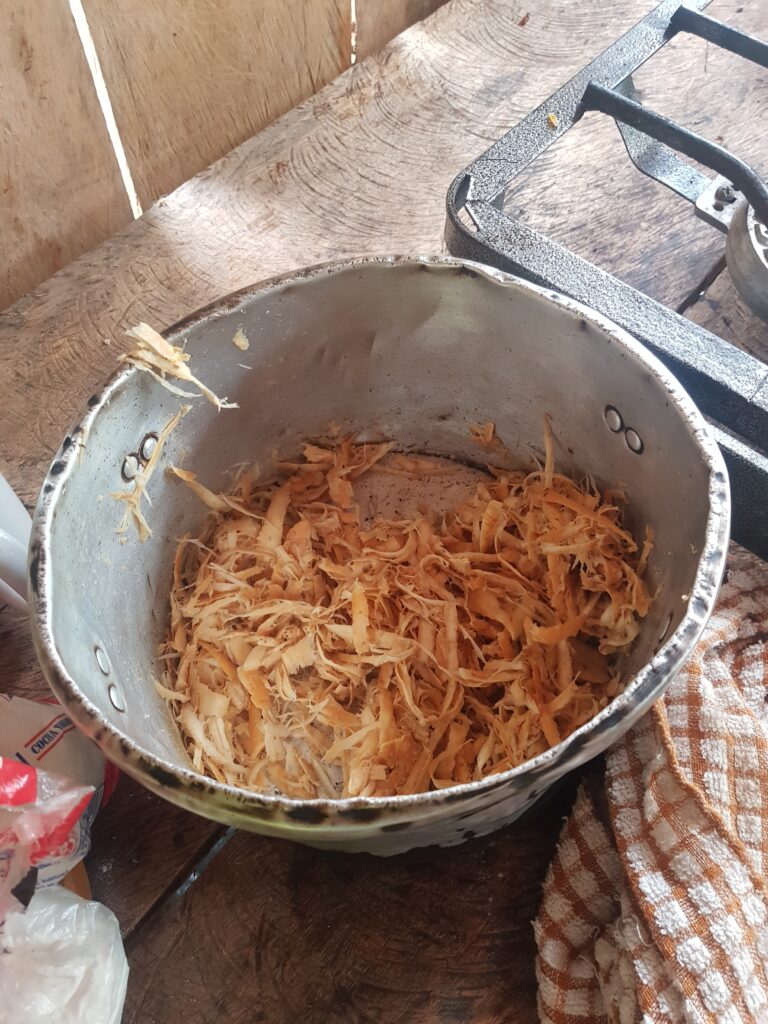sananga and rapeh
An Ancient Elixir for Spiritual Awakening and Healing
what is Sananga?
Sananga, also called Bechette, stands as a time-honored Amazonian remedy crafted from the shredded root of the ARBUSTO shrub, flourishing in the rainforest’s embrace. This shrub, scientifically known as Tabernaemontana Sanana or Undulata, belongs to the Apocynaceae plant lineage. The pivotal active ingredient within Sananga and Bechette is bogaine. Scott Wallace, in a pioneering report for National Geographic, shed light on the Matis tribe’s utilization of Bechette. Subsequently, it has surfaced that numerous indigenous communities in Peru and Brazil have incorporated it into their healing practices for millennia. Referred to as Mana Heins by the Kaxinawa, Bechette by the Matis and Matses, and Kanapa Vetxe Shuti by the Yawanawa, these potent eye drops function across multifaceted realms of healing: physical, spiritual, and energetic.
The active ingredient operates directly on the root causes of ailments, attenuating the forces spawning Panema (negative energy), depression, and psychosomatic conditions. On a physical plane, it purifies and invigorates the eyes, lending support in conditions such as glaucoma, cataracts, astigmatism, conjunctivitis, and chronic headaches, among others. Furthermore, it emerges as a formidable ally in the realm of chronic pain management.
Beyond its physical benefits, Sananga enhances immediate visual acuity, imbuing the surroundings with heightened texture and depth, thereby refining color perception and image definition. This augmented vision likely facilitated hunters in navigating dense, dim forests. On a deeper level, it holds the potential to awaken the third eye, cleanse and expand the aura, and harmonize the chakras, fostering emotional, mental, and spiritual equilibrium.
Sananga, exhibiting a pale greenish-brown hue and a faintly burnt aroma, induces a stinging sensation upon application, lasting several minutes depending on potency.
Upon opening the eyes post-application, a sensation of cleanliness and rejuvenation ensues, accompanied by heightened clarity and a softer, more vibrant perception of the world. Many attribute Sananga’s ability to dispel Panema as a supportive adjunct to Kambo treatments. Administered prior to Kambo, it anchors and prepares the recipient, while post-Kambo usage refreshes and cleanses the eyes after rest. Sananga’s uplifting and centering effects remain accessible at any juncture.
Explore a Brief Image Gallery Depicting the Sananga Preparation Process
Take a visual journey through a concise gallery of images illustrating the intricate steps in the preparation of Sananga. Each Sananga vial presented during the ceremonies is meticulously crafted by me and is also available for purchase
what is Rapeh?
Rapé, with its roots deep in Amazonian tradition, serves as a bridge between humanity and the spirits of the forest, embodying the energy of Yushibu, the God of Creation. In the context of healing, the act of giving and receiving Rapé is accompanied by a prayerful invocation to the spirits, seeking their assistance. It’s crucial to approach Rapé with reverence and utilize it within a ceremonial setting, refraining from mixing it with alcohol or recreational substances, as its primary ingredient, tobacco, can be highly addictive.
Crafted from a diverse array of botanical elements including leaves, seeds, bark, oils, herbs, and flowers, Rapé’s composition can vary widely from tribe to tribe. The fundamental blend typically comprises roasted and ground tobacco mixed with sacred wood ash, such as Tsunu, Sanu, Cumaru, or Pau Pereira. Additional ingredients like Cacao, Tonka Bean, Kava Kava, Cinnamon, Murici fruit, and Eucalyptus leaves contribute to Rapé’s unique properties, which may encompass physical, spiritual, or mental effects. Some potent variations may include Yopo seed or Virola resin, offering profound visionary experiences.
Administered through the nostrils using a bamboo or bone pipe known as Kuripe or Tepi, Rapé requires a momentary suspension of breath as it is gently blown into each nostril. It’s essential to administer Rapé to both nostrils to harmonize and balance the energies of the forest. The method of administration may vary, with some pipes designed for sequential nostril use, while others allow for simultaneous application.
The act of taking Rapé, often referred to as “passing the snuff,” carries various intentions and applications. During kambo treatments, Rapé may aid in releasing energetic blockages and facilitating purging. In other contexts, it is used to alleviate headaches, cool down in hot climates, relax the mind, address sinus issues, enhance concentration, ground and center oneself, lower blood pressure, release energy blockages, and connect with the healing spirit of the forest.
The Rapé must be taken through both nostrils. Because each nasal cavity represents a flow of energy in the body:
Right side:
The channel of the sun -transmitter Yang-. Power of the rational mind that allows one to learn and gain the strength necessary to overcome problems through effort. It’s the male side. The typical problems on the right are selfish or violent behavior, arrogance and pride.
Left side:
The channel of the moon receiver Yin. Power of emotions, pure love, empathy and art. This represents the feminine side. Problems here can include depression, feelings of inferiority, feelings of guilt or even a lack of motivation.
This tobacco has been used sacredly for thousands of years as a parent plant and spirit of the grandfather. When combined with the ash of other plants, Rapé cleanses the sinuses, travels through the lymph and begins a detoxification process. Energetically, Rapé has protective, grounding and cleansing properties. It works on the chakras to clear energetic blockages and activate the pineal gland.
gallery
Some special moments captured…











